I had no idea the blessing I was about to receive when I was asked to review The Haunting of the Mexican Border: A Woman’s Journey by Kathryn Ferguson for Story Circle Book Reviews. I said yes, since how could I possible resist that title? I spent the next few weeks savoring the experiences, ideas, and prose of this book. This is not a book that I read fast. I found myself re-reading sentences for the sheer beauty of the prose and scenes for the powerful experiences conveyed.
Mostly, I was taken with the melding of past and present, as my own experiences growing up on a ranch along the San Pedro River, a vein for Mexican migrants coming to the US, sent me reeling between the intimate familiarity of the rhythms of migration in this region of my childhood and a sense of walking a foreign landscape in the new political landscape that has taken hold since. The review:
“I am not a migratory bird. I’ve always had a place. It is located west of the tall saguaro, south of the dry river, beyond certainty.”
The Haunting of the Mexican Border: A Woman’s Journey begins with this exquisite first sentence that conveys geographical landscape and way of being in the world. Author Kathryn Ferguson brings the reader intimately home for a personal journey that reflects the broader changes of time and place of Mexico, the US, and its intertwined relationship of politics and people.
This journey takes us from Ferguson’s Tucson home to the stunning lands of the Barranca del Cobre, Copper Canyon, and the lands of the Rarámuri people of northern Mexico, to create a documentary film, “The Unholy Tarahumara.” Ferguson paints the raw beauty of this land and its people with an experience from her childhood:
“The teacher told us to tear paper so it looked like a random silhouette of mountains. So I chose blue, green, orange, purple, and red paper. I ripped the tops of each page into sharp angles, then into jagged curves. I glued wads of crushed paper on top of paper, all mismatched, all colors. This is how the Copper Canyon looks.”
Ferguson spends the 1980’s and 90’s with journeys back and forth between Mexico and the U.S. Despite the thousands of miles traveling as a woman alone, she is not afraid for her personal safety. Yet, as time passes, this sense of safety shifts.
“As I listen to the sunset sounds, I think about early years that I traveled back and forth to make films in Mexico. My desert was an open free place. But I began to hear about increasing numbers of bodies found in the Arizona desert. The remains of people who come to the United States to work or find family.” The consequences of NAFTA and increased border security after 9/11 has been a deadly combination, forcing Mexicans to look for work in the U.S. for survival, and for the first time, sending women and children north, since their husbands can no longer come and go as they once did. Dark spots stain the desert where people have died.
Ferguson’s personal journey mirrors greater events. The increase of violence encompasses people from both sides of the border and now marks Ferguson’s own once-safe trips to the desert, as she becomes the target of harassment for Minutemen and other governmental agencies. As the political climate intensifies and more migrants try to cross and die in the desert, the increased militarization of the border grows. I learned a new vocabulary of my childhood homelands of Tucson and Mexico with this increased militarization, including “dusting,” when those patrolling the border lower their helicopters close enough to migrants to kick stones, sand, and cactus into their faces and bodies.
The Haunting of the Mexican Border is a breathtaking work of art. Ferguson’s artistry shines in her prose, polished and raw in a perfect combination, and her ability to convey the beauty and power of humanity. Her love of this place and its people fills every page. This book is especially close to my heart, with its story about lands and peoples deeply familiar and beloved. I read this book slowly, absorbed the language, often re-reading sentences for their detailed precision and the power of what they convey.
Along the borderlands we create shrines, descansos, to mark where a loved one has died. In The Haunting of the Mexican Border, Ferguson has done the magical: created a written shrine to honor a time and people lost, as well as serve as a beacon of hope for the possible. This story of a time and place lifts your heart with beauty, breaks it with reality, and then lifts and inspires again.
Reviewed by Dawn Wink
A writer, filmmaker, and dancer, Kathryn Ferguson lives in Tucson, AZ. She is coauthor of the award-winning book Crossing with the Virgin: Stories from the Migrant Trail.
I reviewed the book, but that was not enough. I wanted to connect with the author, Kathryn Ferguson, for a conversation about lingering questions I had after reading the book. Kathryn graciously shared her time.
DW: Your background is in dance and documentary films, how did you start writing? What was your writing journey? I’ve had actors tell me that writing is like acting—was this true for you and dance?
KF: Writing:
When I was old enough to learn how to read, my dad would pull out a book of Shakespeare and read Macbeth with me. The only things I could remotely relate to were the witches. And the idea that the forests walked. He loved Shakespeare and I loved spending time with my dad, so it made for jolly evenings. My dad liked to write. He was a finalist for Playhouse 90, a big television show. All of American wanted their script produced on Playhouse 90. When he was writing, he seemed absorbed and happy. So I decided to write. I wrote about Martians. My dad would say, “Write about what you know.” That made sense. I felt I really knew Marians and Mars.
Eventually, I wrote in a pink diary that I locked so my big sister couldn’t read it.
When I got into the university, I wrote. We had an assignment to write about someone in our family. I did, and my relative read it. It so deeply hurt that person that I never wrote again. I had no idea words were powerful. I loved the person that I hurt, and felt terrible for years.
More than a decade later, when I started making documentaries in the Sierra Madre, I started writing again for the films and about experiences in the wild Sierra. Then, when I worked with other people to carry water, food, and medicine to border crossers on Arizona desert trails, the experience was so profound that I started writing as a way to deal emotionally with what we saw. I wrote like crazy.
Dance and writing: For years, I studied dance and created a dance studio. Mostly dance and writing are not similar except that for both, it is the process that is important. Although you want a good result, it is the process that changes you and lets you learn. The sweat is in the “doing” of dancing or writing, not the stage performance and not the published book. Perhaps in all art, the difficulty is finding the heart of it, the authenticity. For dance, I would lie still on the floor. I wouldn’t move for 45 minutes until the music truly had an effect on me, touching me deep in the center. For writing, I often walk around, water plants, or sweep, until something hits me and I realize that is what I want to write. Then I rush to write it down before it dissolves. Writing is slippery. Gotta grab it while you can.
DW: One of the things that struck me, as I read, was how very different the political climate now, as opposed to the Arizona I grew up in throughout the 80’s. It seems to me that there are distinct chapters in the political environment, the 80’s with fairly fluid borders and the post-NAFTA and 9/11 repercussions that are detailed in your book. Do you sense a political trajectory now in regards to the border and Mexican migrants, after the publication of your book? If so, what is your sense that this will be?
KF: Political climate: In the past, the Arizona/Mexico border was hardly a border. It was a wire fence lying on the ground. We flew over it like birds.
In the 1970’s, Mexico discovered large oil reserves in the Gulf of Mexico. Mexico borrowed from foreign banks. In the 80’s, oil prices dropped drastically and Mexico fell into financial crisis. The peso was devalued and Mexicans could not afford to buy tortillas and bread. Until then, the border was not so complicated, and US created policies that permitted some Mexicans to come and go through ports of entry. When NAFTA was signed in 1994, the wall started to be built. Powers behind the scenes of the trade agreement knew it would displace small Mexican farmers. By the droves, people started to cross the border.
Current politicians want the border wall to be bigger and enforced even more. With that said, I think that the wall will come down. Not in my lifetime, but in the future. In 2006, it cost 2.4 billion to build 670 miles of wall. It is far more expensive now.
All walls come down. The Great Wall of China is now a tourist attraction. And our concept of nation-states, and borders as we know them, no longer functions. I am not sure what will replace the concept, but we are already reducing the importance of place in human actions and loyalties. We are taking steps toward territory-less governing in entities such as business, churches, and strangely, with mafias and the drug trade, one of the best examples of international business and control. Not that what replaces nation-states will be a kinder solution, but our world will be very different.
DW: You’ve spent years taking water to migrants in the desert. You shared some of the stories in the book, are there any other stories about people and experiences that you’d like to share?
KF: Children entering US: We now have children refugees fleeing extreme violence in Central America, violence the US helped create by our actions in the 1980’s. We supported dictators, were complicit in the deaths of many people. What has replaced that is unrest, poverty, and violence in Central American cities. We see children that are sent to the US border alone. They are not hiding. In Texas, they cross a river between Mexico and the US, and turn themselves in to Border Patrol asking for asylum. What parents would send kids on a dangerous journey to a foreign country if it were not a dire necessity? Kids are being killed by powerful gangs. Leaving their country is the only choice for many. These surges of hundreds of children stepping onto US soil and asking for help won’t stop soon.
People are crossing borders all over the world.
Mexicans and Central Americans cross US borders and Syrians enter Europe but the big question is: how will we live on this planet as it permanently changes with global warming? As humans, we are both petty and magnanimous creatures. With the disaster of global warming, I wonder what will happen as people move throughout the world. It seems that for global survival, we have to co-operate with each other. I wonder if that is possible.”
Kathryn Ferguson will be in Seattle, WA speaking about her books March 1, Ravenna Third Place Books, 7 pm & Bellingham, WA March 2, Vintage Books, 7 pm. Ferguson will at the Tucson Festival of Books March 12 &13, 2016.
The Perils of Women Journalists on the Border: A discussion of border journalism as it has been viewed through the eyes of women and the ways those women have influenced our understanding of the shifting boundaries between the US and Mexico. (Sat, Mar 12, 11:30 – 12:30 pm, Social and Behavioral Sciences Tent)
That’s Border Life, She Said: Kathryn Ferguson, Gayle Jandrey and Margaret Regan give us a unique perspective of life along the border: Their tales are all told by women. (Sun, Mar 13, 1:00 – 2:00 pm, Student Union Kachina)
After Kathryn and my conversation, I sat and looked up at the desert sky for a long while. I thought of all conveyed in The Haunting of the Mexican Border and happening along my beloved borderlands. During our conversation, Kathryn and I discovered that we had both recently written pieces exploring the commonalities of Syrian refugees and Mexican migrants, each of us recognizing the deep complexities and divisions often driving national and international policy and conversations. Yet as I looked at the sky, I felt great hope. For as long as writers tell the stories of humanity, and keep these experiences alive, so too lives the potential for healing and change.
* * *
To subscribe and receive Dewdrops in your email, please enter your email address in the box under “Follow this blog via email” or click on the ‘Follow’ icon in lower right-hand corner of the blog’s screen and ‘Confirm Follow’ in the email you receive. To return to website: http://www.dawnwink.com

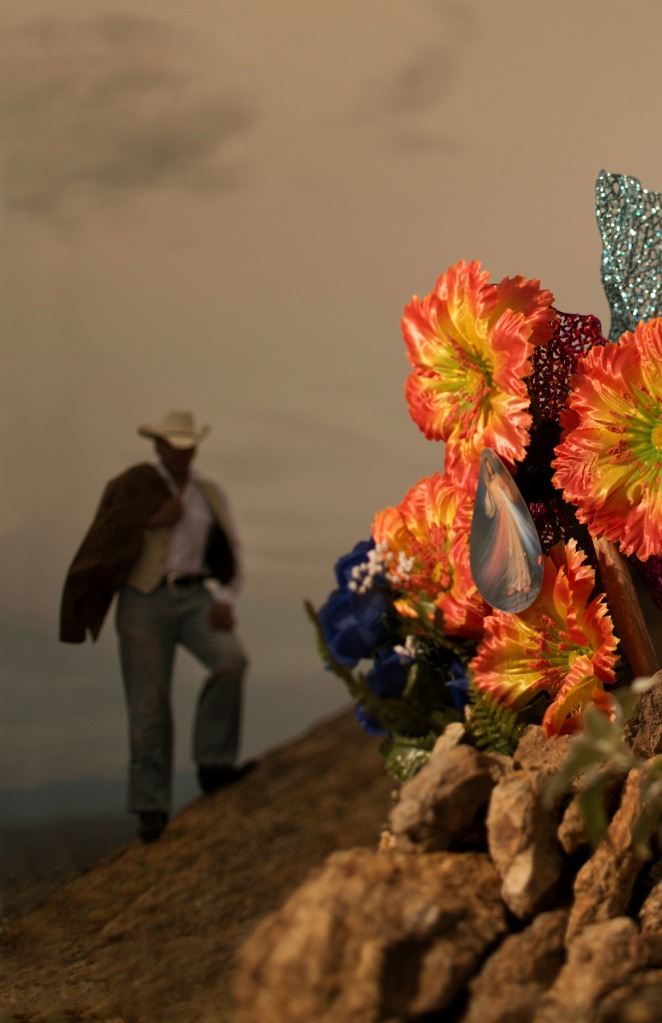


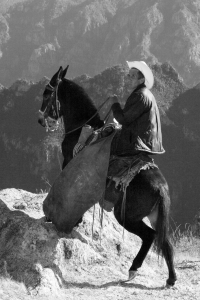

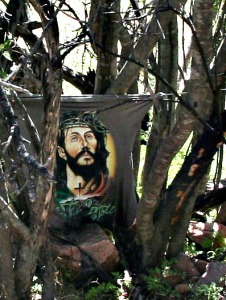
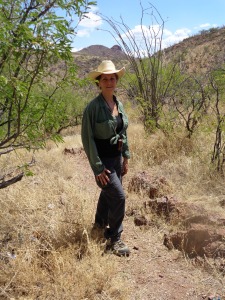



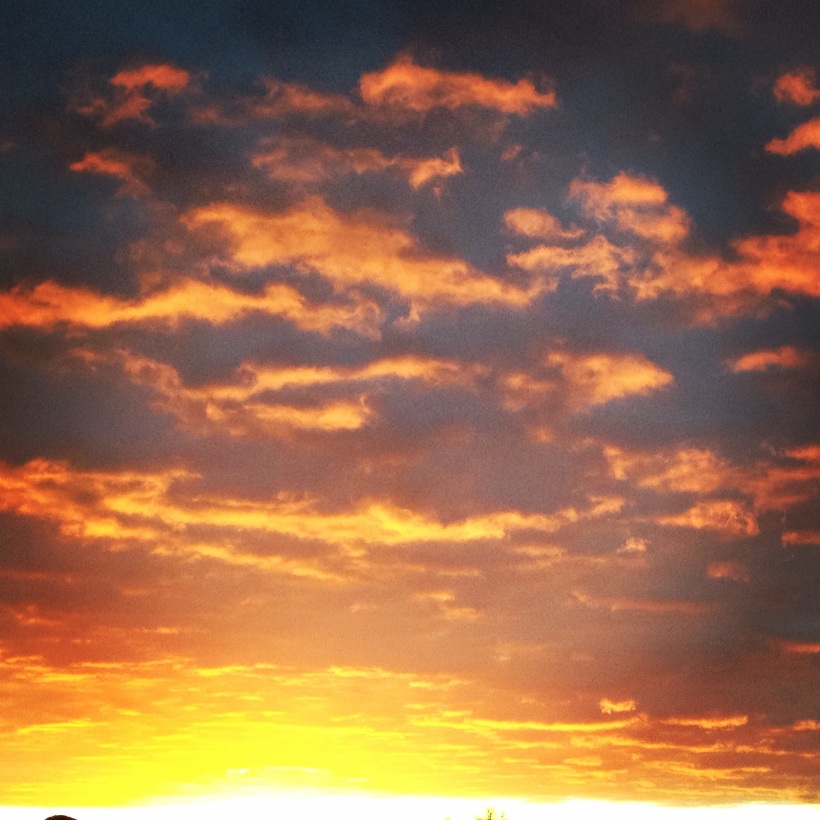
August 10, 2017 at 3:57 pm
zngva0f95hur34jpl7xg
August 10, 2017 at 3:56 pm
rzhsg9s8hhqpcfrd57zh
August 10, 2017 at 3:55 pm
2nuytil4dt6lltnvubzs
August 10, 2017 at 3:54 pm
hot1sik2av8lf22udqrr
August 10, 2017 at 3:53 pm
okc6gnmnfzyotkof2ff0
August 10, 2017 at 3:52 pm
nafy25f0q8o1m9cf0n8s
August 10, 2017 at 3:49 pm
g1mjttbcegibwyjfdoug
February 9, 2016 at 9:56 pm
For those who want to “help”, you can start by buying coffee directly from coops in Mexico. Cafe Justo (just coffee) is online and you can order directly. When your coffee arrives, it will tell you who grew it and who roasted it in Agua Prieta.
March 6, 2016 at 2:14 am
Juliana, thanks so much for sharing your experiences and ideas on how to contribute. Adelante! Dawn
February 9, 2016 at 9:54 pm
Reblogged this on writingontherim and commented:
If you have any interest whatsoever as to how times have changed along the border, the culture of the people of Sonora and Chihuahua, this is a must read. I need to go visit my friends who live there.
February 9, 2016 at 8:34 pm
Gracias, Dawn. What a fascinating and rich post this is. I look forward to reading this book.
February 10, 2016 at 2:28 pm
Querida Catherine, I’m so glad this review moved this book more to the top of your massive pile of books beside your bed. I loved this image and immediately envisioned my own leaning tower of Piza books beside my bed. This is our kind of book.
Abrazos,
Dawn
February 9, 2016 at 6:52 pm
Greatly inspiring review. Thank you for sharing it Dawn!
February 10, 2016 at 2:23 pm
Dear Charlotte, this book deserves a wonderful review! I am grateful to know that hopefully I did it justice. Thanks so much, Charlotte!
February 9, 2016 at 4:35 pm
Thanks Dawn!
Rev. Matthew E. Davis Pastor, Mendocino Presbyterian Church P.O. Box 105 Mendocino, CA 95460 Gravityofgrace@gmail.com 707-337-9045
>
February 10, 2016 at 2:21 pm
Thanks, Matt! Can’t wait to read your own writing and blog!
Big hugs,
Dawn
February 8, 2016 at 2:41 pm
See below as directed…. Anne Hillerman http://www.annehillerman.com http://www.wordharvest.com Author of Rock with Wings and Spider Woman’s Daughter published by HarperCollins
Date: Sun, 7 Feb 2016 12:51:02 +0000 To: annehillerman@hotmail.com
February 8, 2016 at 5:32 am
Dear Dawn, This was an amazing and informative piece. Thank you for writing it.
Kay
>
February 10, 2016 at 2:21 pm
Dear Kay, love and hugs to you across the miles. Thank you so very much for taking the time to connect. You are in my thoughts, prayers, and heart.
Dawn
February 7, 2016 at 10:01 pm
Your wonderful book review of this book was a delight to read and now to discover that your journey went on to include a conversation with this exceptional author is a joy to know. All this has been a treasure to me and I’m so grateful I learned of this book from you. This piece is simply awesome. Thank you, Dawn!
February 10, 2016 at 2:20 pm
Dear Mary Jo, it really is a reflection of the ideas and work of the book that inspires one to connect with the author, isn’t it? I’m so grateful to know that this book and interview spoke to you, as it did to me! “Simply awesome.” I simply love that. Thank you, Mary Jo!
February 7, 2016 at 9:26 pm
Many thanks, Dawn and Kathryn, for all the insight I gleaned from this post. A true source of enlightenment for me, one that harkened back to the thought of “what if” I had gone into the Peace Corps after graduating high school? The review of The Haunting of the Mexican Border was magnificent in its telling of Kathryn’s experiences with the peoples on both sides of the Mexican border, and how that issue has expanded to other borders today. I also remember living in Tucson in the early 70s, and going to Rocky Point, sans wall, was a marvelous mini vacation into another land, another world, where camping on the sandy beaches and breathing in the salt air with friends was the only ideal, and making new friends who lived in “another country” nothing short of an amazing experience. I wonder, too, why people can’t get along today? We have become a “territorial” people at the cost of our fellow human beings, and I also write about the “injustice” done…
February 10, 2016 at 2:16 pm
Dear Alice, oh, your thoughts here made me think of my own What Ifs. Thank you so much for sharing this, as well as so much of your heart and own experiences here. Our family went to Rocky Point with friends during these years, as well, and you instantly took me back to that infinitely more expansive time and place there on the beach. You convey the essence of what is happening so beautifully and wisely here, “We have become a “territorial” people at the cost of our fellow human beings.” Thank you and thank you.
Huge hugs,
Dawn
February 7, 2016 at 5:51 pm
It’s all so primal, isn’t it? People hurting people, people helping people. Millions of years ago on the grassy savannas of Africa, our ancestors must have done the same. One small tribe welcomes and feeds the starving, roving remnants of another tribe. A mountain range to the west, a different tribe hurls stones down upon a tribe that has wandered into their territory. What has changed?
Almost everything. Most importantly, how we communicate. We can put our words on paper and bind them into books. We can share our thoughts with others and surprise them with how many of our beliefs are like their own. We begin to understand those who are different from us because they aren’t so different, after all. With this understanding, comes compassion.
That’s what makes a book like this so special. That’s what makes reviews of books like this important. I look forward to reading it. Thank you, Dawn.
February 8, 2016 at 4:33 pm
Dear Tom,
Primal is the perfect word to convey the visceral nature of the feelings and emotions surrounding these dynamics, with emotions and actions that span the spectrum. How beautifully and wisely you express what HAS changed throughout the previous millennia and centuries, “We begin to understand those who are different from us because they aren’t so different, after all. With this understanding, comes compassion.” I do believe this.
Thank you so very much for taking the time to write and share your own wisdom and compassion. Here’s to a shared journey, Dawn
February 7, 2016 at 4:26 pm
What a delight to wake up and have this blog post waiting for me. I can’t wait to read Ferguson’s book. I have decided to attend the book festival this year and I’m glad to know about her so I can attend her talks. We lived in Tucson during the Sanctuary movement and contributed to and attended concerts and events in support of those doing that important work. Thank you so much for the review and the interview. I too believe that “stories of humanity…have the potential for healing and change.”
February 8, 2016 at 4:25 pm
Dear Amanda,
You are in for such an experience with Ferguson’s book and the Tucson Festival of Books! Both are such treasures and how wonderful you’ll have the opportunity to hear Ferguson speak of these issues in person. With your experiences in Tucson during the Sanctuary movement, these events will have deep resonance. I wish that I were there with you at the Festival! I will be there in spirit.
Yes, on the potential for healing and change.
Deep gratitude and many blessings,
Dawn
February 7, 2016 at 2:07 pm
Dearest Dawn, I do not have the proper words for this amazing story. As I began reading I thought of how I wished I had had this book when I began teaching in the Aguila Elementary School; how it would have helped me gain a better understanding of the children in my classroom. I thought of how, coming from an all white community in Michigan I had absolutely no idea what it was like to be anything other than white. I did have one Hispanic friend in high school, her name was Maria Ibarra and I think I was the only person to make friends with her – I had no idea why, no understanding. Maria’s family were Mexican migrants who had come to MI to pick crops. They were gone again after a few months and I lost touch with Maria. I don’t remember how we communicated but I think she knew some English. I have no understanding of the people in our government who want to build walls and shut desperate people out. To me, this is the same as telling them their lives have no value. This is a form of power and control over others that has no place in a humane society.
In the Aguila Elementary School we had a family who had come to the US from the Tarahumara Region. They spoke a language/dialect that no one in our school understood and so we used a lot of “sign” language to communicate. I have no idea what happened but they left within a few weeks of their arrival. Perhaps the parents were unable to find work in the fields due to the language barrier. I think of them often these many years later and wonder what happened to them. I heard stories that chilled me to the bone from children who had “made” it alive across the border. I lived within 4 hours of the border but have never seen the wall – it wasn’t there when I first moved to AZ and was able to cross back and forth whenever I wanted to. While living in Aguila I met with strong resistance in my own home regarding any involvement with this “situation”. Therefore the most I could do was listen to my students and send some money to Tony Diaz and his librotraficantes of Libros sin Fronteras (I’m not sure I have all that correct – it’s been many years).
Now I not only think of those from Mexico and Central America trying to find a better life for their families but also of the thousands of Syrian refugees risking their lives and the lives of their children in overcrowded boats in frigid waters. I think of Gary Paul Nabhan hoping that his family in Lebanon is safe. I think about the heartless people in our government who turn these refugees away to an almost certain death.
Thank you for writing this, for sharing what needs to be said. I have ordered “The Haunting of the Mexican Border: A Woman’s Journey”. I expect this book to be very different from Charles Bowden’s books of similar problems along our border with Mexico.
Hugs and love to you, Dawn.
Lindy
February 8, 2016 at 4:21 pm
Dearest Lindy,
Thank you so very much for taking the time to write and connect on all here. All you wrote here comes from such a deep, heart-full place. You are not alone in coming from a different cultural area and not understanding the complex dynamics of the border.
I so appreciated your experiences with Tarahumara family and thought of a documentary that Kathryn Ferguson made about a Tarahumara/Raramuri woman who was put in an insane asylum in Kansas, because she spoke her Indigenous language and nobody understood. “Rita of the Sky” is a documentary about a mysterious woman who was erroneously placed in a Kansas mental institution because her unrecognized native language was described as “guttural noises” of a mentally ill person. Since she spoke no English, she was declared mentally ill and sent to a Kansas mental hospital for 10 years. http://www.thehauntingofthemexicanborder.com/films/
Thank you ever so much for sharing your spirit and heart, Lindy.
Deepest gratitude and so much love,
Dawn